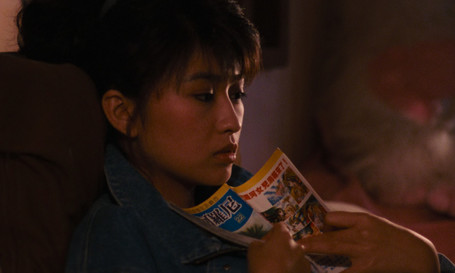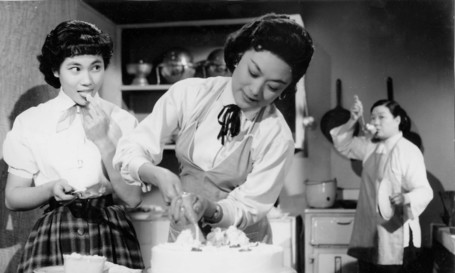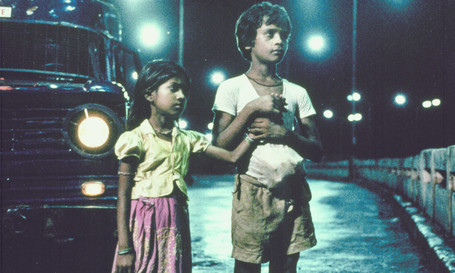Archiwum - 10. Festiwal Filmowy Pięć Smaków
Odrestaurowana klasyka
Azjatycka klasyka odkrywana na nowo
Festiwal Filmowy Pięć Smaków kontynuuje w tym roku pokazy odrestaurowanej klasyki z Azji. To wyjątkowa okazja, by zagłębić się w mniej znaną historię azjatyckiej kinematografii i poznać odkryte na nowo dzieła. W ramach 10. Pięciu Smaków w sekcji dedykowanej klasycznym tytułom znalazły się "Córka Nilu" (1987) - jeden z wczesnych filmów Hou Hsiao-hsiena, ujmująco portretujący pokolenie wkraczające w dorosłość w popkulturowej otoczce lat osiemdziesiątych; "Nasza siostra Hedy" (1957) o czwórce nowoczesnych kobiet z modernizującego się Hongkongu; "Historia Santiego i Viny" (1954) - poruszający buddyjski melodramat, zaginiony przez lata pierwszy tajski film zrealizowany w kolorze, który w doskonały sposób wykorzystuje możliwości nowego medium; "Salaam Bombay!" (1988) - uderzający autentycznością obraz życia na ulicach indyjskiego miasta, przełomowy dla rodzimej kinematografii film wybitnej Miry Nair.

 Córka Nilu
Córka NiluKilkanaście ostatnich lat to czas technologicznej rewolucji nie tylko w zakresie produkcji filmów, ale również obiegu kopii - w którym ciężkie taśmy filmowe zostały zastąpione przez lekkie dyski cyfrowe (DCP), ważące najwyżej kilka kilogramów. Mimo że jeszcze kilka lat temu projekcje cyfrowe w polskich kinach, szczególnie tych studyjnych, były wciąż nowością, dziś żadnemu dystrybutorowi nie kalkulowałby się powrót do eksploatowania taśm jako głównego nośnika, bo poza kosztami transportu musiałby uwzględnić też odpowiednią archiwizację nośnika. Niewielkie dyski DCP są równie wygodne i ekonomiczne dla kin, z których część przeszła gruntowną modernizację, rezygnując z utrzymywania i użytkowania z projektorów 35mm.
Jak więc prezentować starsze filmy w sytuacji, gdy część kin nie ma już technologicznej możliwości organizowania pokazów z taśm 35mm?
Być może paradoksalnie - szybki rozwój technologii stał się dla klasycznych filmów szansą na powrót do obiegu dzięki zaawansowanym możliwościom cyfrowej rekonstrukcji. Wprawdzie sama idea cyfryzacji filmu nie jest nowa, jednak digitalizacja kopii oraz jej podstawowe odczyszczenie i przeprowadzenie korekcji kolorów nie są równoznaczne z rekonstrukcją bazującą na materiale uzyskanym dzięki zeskanowaniu taśmy w wysokiej rozdzielczości 4K (4000 pikseli w pozycji horyzontalnej). To proces bardziej skomplikowany, kosztowny i czasochłonny - trwający nawet do 3000 godzin w przypadku znacznie zniszczonych negatywów.
Obecnie rekonstrukcję cyfrową prowadzą same studia filmowe - jeśli opłaca się inwestować w filmy, których dystrybucja wciąż może przynieść zysk. Takim przypadkiem jest "Lepsze jutro" Johna Woo, którego rekonstrukcję przeprowadził producent, hongkońska firma Fortune Star. Premierowy w Europie pokaz "Lepszego jutra" z odrestaurowanej kopii otwierał zeszłoroczną edycję Pięciu Smaków.
Mniej opłacalna w marketingowym sensie jest rekonstrukcja filmów uchodzących za arcydzieła danej kinematografii czy najstarsze zachowane filmy, ale nie zaliczające się do popularnego nurtu kina. O rekonstrukcję takich tytułów dbają zwykle archiwa i organizacje, których działalność ma na celu konserwację i archiwizację oraz udostępnianie filmów.
Ważnym ośrodkiem prowadzącym cyfrową rekonstrukcję jest włoskie laboratorium L'Immagine Ritrovata (dosł. odnaleziony/odzyskany obraz). Od 2015 roku prowadzi ono także oddział w Hongkongu, co znacząco wpływa na poszerzenie możliwości pracy nad filmami z Azji - niweluje to konieczność międzykontynentalnego transportu i koszty ubezpieczenia, które mogły stanowić problem szczególnie w przypadku filmów istniejących tylko w jednej, archiwalnej kopii. To dzięki pracom w L'Immagine Ritrovata mogliśmy podczas 9. Pięciu Smaków obejrzeć nie tylko "Lepsze jutro", ale również dwa tajwańskie filmy wuxia Kinga Hu - "Dragon Inn" oraz "Dotyk zen".
Emilia Skiba

Taiwan 1987, 93’

Tajlandia 1954, 117’

Hongkong 1957, 115’

Indie 1988, 113’


